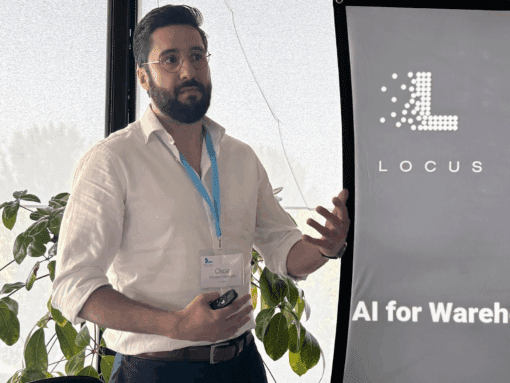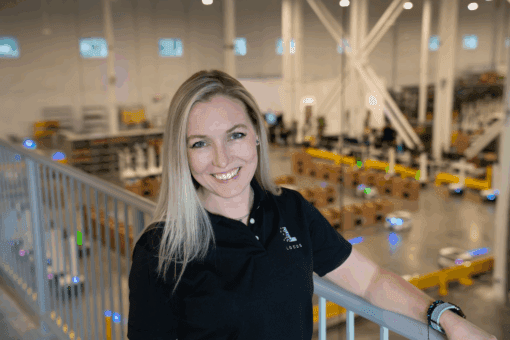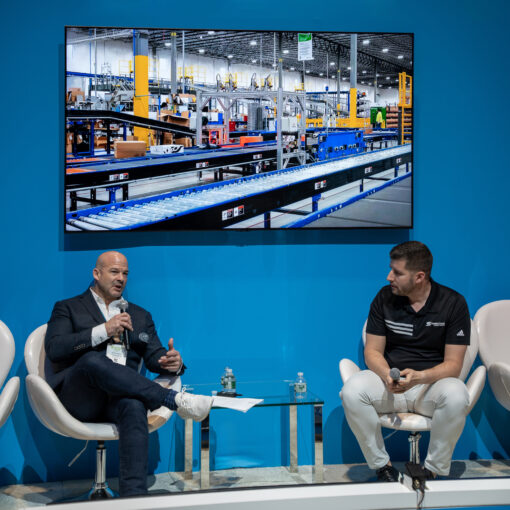WP: How to achieve 400 UPH with Locus Fast Pick
WP: How to achieve 400 UPH with Locus Fast Pick Download Now!
Legal Considerations for Robots-as-a-Service (RaaS) in Warehousing
Joel Collins, Chief Legal Officer

Robots-as-a-Service (RaaS) is changing how warehouses adopt automation. Rather than requiring large capital expenditures, companies lease robotic solutions through a subscription-based model that includes maintenance, support, and software updates. This approach provides financial flexibility and operational scalability, and, while similar to SaaS models, has a few key differences.
Understanding the RaaS Model
One of the first questions I asked when I joined Locus Robotics was how we offer our robots to the market. At that time, I was introduced to our RaaS model. Nearly everything today is offered “as a Service”. Doing a quick google search, I found over 35 “as a Service” variations, including everything as a service (XaaS)!
RaaS in the warehouse automation space is a subscription model in which we lease our bots to customers along with maintenance, support, and software upgrades. As someone who has spent the past fifteen years working in technology, I found this model familiar. Not only is it often a simpler contractual model than an outright sale, but it also better meets the needs of our customers.
Why RaaS in the Warehouse?
Lower Upfront Costs: Many customers prefer to avoid the capital expenditure (CapEx) investment required to purchase automation outright. The RaaS model leads to a faster return on investment by allowing them to spread costs over time.
Scalability: CapEx models require a large fixed spend and tend to be all or nothing. Our RaaS model allows customers to start small and expand gradually. They don’t have to make a big bet on success with limited information.
Adaptability: Traditional CapEx models assume stable long-term forecasts, but economic conditions and competitive pressures often change unpredictably. The RaaS model provides flexibility when forecasts are inaccurate.
Seasonality Adjustments: With a CapEx model, customers must invest in additional capacity for peak seasons, even if those resources sit idle during slower periods. RaaS allows them to lease additional bots only when needed and return them after the busy season.
Continuous Enhancements for All Customers
Another important benefit of the RaaS model is that software and system enhancements are continuously delivered and made available to all customers. This ensures every warehouse running autonomous robots benefits from the latest innovations, features, and performance improvements without the need for separate upgrade projects or additional fees.
As the system evolves to meet emerging customer needs and operational trends, these improvements are rolled out seamlessly through ongoing support and maintenance. This model keeps every deployment current and competitive, while reducing the burden on internal IT and operations teams. It also aligns the provider’s success with their customers’ success, since better software and system performance means more value delivered across the board.
Comparing RaaS and SaaS Contracts
Many of us are familiar with Software as a Service (SaaS) contracts. RaaS and SaaS contracts are similar but do have a few key differences.
- Subscription Based: Fundamentally, all “as a Service” models are subscription-based. Like many SaaS agreements, our RaaS agreements are annual subscriptions with a minimum of a three-year commitment paid in advance.
- Implementation Fees: Similar to some SaaS agreements, there is an implementation fee. In our case, this includes project management, solution design and layout, network setup and support, solution infrastructure set up, Warehouse Management System (WMS) integration support, solution testing, and associate/operational training.
- Site License: SaaS licenses come in many different varieties — enterprise-wide, per user, or usage-based being some examples. For Locus, each warehouse where we deploy robots is essentially its own customer. Accordingly, in our RaaS model, robots are licensed on a per site basis irrespective of number of users or usage.
- Maintenance and Support: Like many SaaS companies, Locus offers maintenance and support of its solution. Similar to support for SaaS offerings, Locus maintenance and support includes updates, enhancements, modifications, and patches. Again, like SaaS support, Locus has target response and resolution times for any reported incidents and target uptime. One difference from the typical Saas model is the RaaS model includes supporting hardware. To the extent any hardware becomes inoperable and is unable to be repaired onsite, Locus maintenance and support includes a Return Material Authorization (RMA) process.
- Mutual responsibility: Both SaaS and Raas models require a certain degree of cooperation with the customer in order to be effective. SaaS customers often have to meet certain computing requirements or be on a certain operating system in order for software to run effectively.
Locus customers have both pre-installation and post- installation responsibilities in order to get the most out of their subscriptions. RaaS customer site preparation will generally include the provision by and maintenance of a dedicated internet provider line, smooth floors, power feeds to charging stations and other physical alterations. Post–installation, Locus furnishes normally consumable replacement parts such as wheels, casters, and batteries, which may be required to maintain Locus furnished products in normal operation. Customers are expected to provide adequately trained technicians to install such replacement parts. As part of the installation, Locus trains customers’ designated personnel in routine maintenance and provide necessary manuals.
As more warehouses turn to automation, the RaaS model offers a practical and scalable way to integrate robotics without the financial and operational hurdles of traditional CapEx investments. By providing subscription-based access to automation, warehouses can adapt to shifting demands, scale efficiently, and optimize resources without locking into long-term infrastructure commitments.
Understanding the nuances of RaaS agreements is key to maximizing its benefits. From implementation fees to site licensing and maintenance responsibilities, a well-structured contract ensures that both vendors and warehouse operators are aligned on expectations and obligations. By carefully evaluating these legal considerations, warehouses can confidently deploy robotic solutions that enhance efficiency, support growth, and drive long-term success.
BIO:
As Chief Legal Officer, Joel Collins leads Locus’s global legal operations. He has served as the Chief Legal Officer/General Counsel of both private and public companies. Previously, Collins was Chief Legal Officer at Benefitfocus, and Chief Legal Officer & SVP of Business Development at Quick Base.




